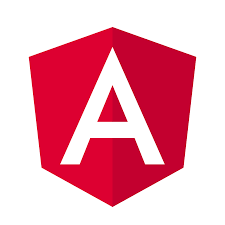
Anowar Sadat
My name is Anowar Saday, and I am a passionate and experienced web developer specializing in building high-quality, scalable web applications. With expertise in PHP, frameworks like Laravel, Codeigniter and Symfony, and ecommerce platform like, Magento, Shopify, WordPress Woocommerce, and modern JavaScript frameworks such as Vue.js, Node.js, Angular and React, I enjoy creating seamless user experiences and robust backend systems.
I have a strong background in microservices architecture, cloud services (AWS), and best practices like Clean Architecture, SOLID principles, and CI/CD. Having worked in agile teams, I thrive in collaborative environments and am always keen to explore new technologies to deliver innovative solutions.
- Role
Sr. Web Developer
- Years of Experience
14 years
Skillsets
- SCSS - 6 Years
- Laravel - 6 Years
- SQL - 9 Years
- Rest APIs - 7 Years
- Node Js - 5 Years
- Node Js - 6 Years
- Node Js - 6 Years
- APIS - 9 Years
- Mongo DB - 6 Years
- Restful APIs - 6.0 Years
- REST API - 6 Years
- RESTful API - 6 Years
- Go Lang - 5 Years
- Custom php
- Mongo - 6 Years
- Angular Js
- Bootstrap
- CodeIgniter
- JSON - 8.0 Years
- Magento 2
- Ecommerce website development
- Sugar crm
- Orange hrm
- AI - 5 Years
- web - 12 Years
- REST API - 8.0 Years
- jQuery - 8 Years
- Magento - 11 Years
- PHP - 10 Years
- PHP - 14.0 Years
- Web Development - 12 Years
- Backend - 10 Years
- Wordpress - 8 Years
- Wordpress - 8 Years
- MySQL - 5 Years
- MySQL - 10.0 Years
- MVC
- Shopify - 6 Years
- JavaScript - 8 Years
- Magento - 11 Years
- Mongo DB - 7 Years
- HTML - 6 Years
- CSS - 9 Years
- WooCommerce
- Ecommerce
- Web Services
- API
- AJAX
- Angular - 05 Years
- HTTP
- MVC
- REST
Vetted For
- Roles & Skills
- Results
- Details
- Backend Integration Solutions Engineer (Salesforce & Other cloud Integrations) - REMOTEAI Screening
- 80%
- Skills assessed :Api integration, Problem Solving Skills, relational Databases, REST API, soap apis, Git, Go Lang, Salesforce, DevOps, Python/Java, AWS, NO SQL
- Score: 48/60
Professional Summary
- Jan, 2020 - Mar, 20222 yr 2 months
Sr. Web Developer
Webkeon Technologies - Oct, 2017 - Jan, 20202 yr 3 months
Sr. Web Developer
Web Spiders - Mar, 2015 - Oct, 20172 yr 6 months
Sr. Web Developer
Elagoon Digital Pvt. Ltd. Web Developer
Ansh Info Solutions Pvt. Ltd.- Feb, 2011 - Mar, 20154 yr
Sr. Web Developer
Senorita Creations Pvt. Ltd.
Applications & Tools Known

MVC

Shopify

Magento

WordPress

Zoho CRM

Sugar CRM

REST

SOAP

SSL

HTTP

Angular

HTML

CSS

MongoDB

PHP

Javascript

Shopify
Work History
Sr. Web Developer
Webkeon TechnologiesSr. Web Developer
Web SpidersSr. Web Developer
Elagoon Digital Pvt. Ltd.Sr. Web Developer
Senorita Creations Pvt. Ltd.Web Developer
Ansh Info Solutions Pvt. Ltd.Major Projects
webspiders.com
learn.awecademy.org
marinersins.com
ivinviljoen.net
mikesbikes.com
spartansolutionsinc.com
amgit.com.au
gecko.ai
e2m.live
uatpublishmyad.webspiders.com
2in1pay.com
zipshowing.com
scienceofalpha.com
zoebot.ai
Shopify Links
Magento2
Magento
WordPress Woocommerce
WordPress
Codeigniter
Drupal
Laravel
Node.js
Websocket API
endoaccessories.com
Woxer
Patriot Hitches
Khadims
Sareez
woxer.com
patriothitches.com
khadims.com
komvos.com
ilexlondon.com
searide-dubai.com
fabric-online.com
sareez.com
2laser3d.com
monotikaylika.gr
webdesignermontreal.ca
anatex.com
elleforgiatto.com
dragana.com
HYPERLINK
shop.thesocietyinc.com.au
The Society Inc
ancientketo.com
Ancient Keto
Education
Madhyamik (10th)
West Bengal Board of Secondary Education (2003)Higher Secondary (10+2)
West Bengal Council of Higher Secondary Education (2005)MCA
TECHNO INDIA COLLEGE OF TECHNOLOGY (2011)B. Sc Honors in Mathematics
Kalyani University (2008)MCA
TECHNO INDIA (2011)B.Sc. Math (Hons)
K.U. (2008)HS Science (10+2 th)
Sadikhan's Dearh Vidyaniketan (2005)MP (10 th)
Sadikhan's Dearh Vidyaniketan (2003)
Interests
AI-interview Questions & Answers
Myself, Anur Sadat, uh, BS in mathematics and MCA. I am an experienced software engineer with over 5 years of experience in developing and integrating cloud based application. I am proficient in programming language such as Google, Python, and Java with a strong focus on building reliable and secured applications. My experience includes includes extensive hands on work with Salesforce, utilizing REST and Shop APIs, integrate, and customize solution effectively. I have a solid background in AWS services, and I am comfortable designing scalable and build tolerant solution to meet business needs. My experience with Russian control system like it along with strong understanding of relational and low SQL database allow me to work efficiently in diverse environment. I am familiar with agile or scrum methodologies methodologies methodologies and 3 in cross functional teams where actively contribute to solution architecture and technical troubleshooting. I am excited to leverage my experience in Salesforce integration, cloud performance platforms, and programming language to develop innovative solutions that need solve real world business challenges. Additionally, I am eager to learn and grow, particularly in enhancing my group programming skills to align with the technology stack required for this role. Thank you for considering my application. I look forward to opportunity opportunity to contribute to your team and the success for your projects.
How do you ensure that your back end code is scalable and maintainable? Can you provide examples of best practices you have followed in your previous projects? Modular design, I break down the application to smaller, reusable modulars. Modules follow single responsibilities principle, asynchronous processing. I use asynchronous operation to handle long running task. Example, in node Node. Js with async weight to avoid blocking the even loop, catching implement catching mechanism, like, release to reduce load on the database to improve performance, database optimization, use database indexing, and efficient queries, especially for a large database to ensure fast driven scaling, logging, and monitoring. I set up proper logging and monitoring like AWS, CloudWatch, ELK Stack to detect performance, bottleneck, and resolve issue quickly. Scalable infrastructure, I leverage cloud service like AWS, Lambda, EC 2, and auto scaling to handle traffic skipping and scale the application as needed. For best best practices, microservice architecture, I use a micro service architecture. In the previous project, I used microservice to ensure that each service can be scaled independently based on load CICD pipelines, implemented continuous integration and development pipelines using tools like Jenkins, CircleCI, or GitLab CI or Jira to automate testing and deployment. Version controlling follow Gitflow branching model for consistent version control ensures smooth collaboration across team, automated testing, error handling, implement global error handling and structured logic, Winston in Node. Js to quick, identify, and fix issues.
What's the most challenging indications issue you have faced while working with Salesforce or other cloud based applications? How do the did you approach and resolve it? Most challenging integration issues. One of the most challenging integration issues I faced was when integrating Salesforce with an external CRM system. The primary challenges was ensuring real time data synchronization with managing API rate limit and data transformation. Between the two platforms, the data needed to flow seamlessly in both direction, and there were in the data format between Salesforce and the external system, which added complexity. How I resolve it? Data mapping and transformation. I create a media layer service to handle data mapping and transformation between Salesforce and the external system. This ensured that the data from Salesforce was correctly formatted before being sent to the external system and vice versa. Handling API rate limit. To handle API rate limit, I implemented a queue system using AWS SQS to queue request and process them asynchronously. I also set up an exponential block off strategy for details to avoiding hitting rate limit. Dedirectional sync. I use Weibo in Salesforce and the external CRM system to trigger data sync in real time, ensuring the data was updated across both system without manual intervention. Error handling implement the robust error handling and logging system using AWS CloudWatch to monitor API call, track failure, and automatic detail failure transaction. Performance optimization, To ensure the integration perform perform well under heavy loads, I use batch processing for large dataset and recognition for API calls, reducing the risk of timeouts, and improving data transfer efficiency. This approach help establish a reliable and scalable integration, allowing for real time data synchronization with managing challenges like rate limit and data inconsistency.
Describe your experience using Git or version control. How do you manage branching, merging, and resolving conflicts in a collaborative environment in a collaborative environment. Experience experience using Git for Vaasan control. I have extensive experience using Git for Vaishan control in collaborative environment using ensuring smooth collaboration and high quality code. Here, I typically manage branching, merging, and resolving constraints. Branching strategy, I follow the Git model with which includes main branches like master, production, read code, and develop integration branches for features. Features branches are created from develop or new facility or bug fixes, ensuring that only stable code reaches in production. For hotfix, I create branches from master, allowing quickfix to be applied without disrupting ongoing features development. Development. Margin process. Before merging a feature, branches into developer master. I ensure that the code assess all tests and is received via a pull request. Peer. The peer includes a detailed description of the changes and any context necessary for review. I handle mass conflict by checking out the conflicts, file, resolving reviewing the changes made in each branch, and manually resolve them by ensuring the correct logic and code structure are maintained. I ensure that the commit history remains clean by squeezing commit when merging particularly for features branches to avoid flattering the history with unnecessary commits. Resolving complex merge conflict. I have default complex merge conflict when multiple developer work on the same part of the code base. In that the and this is a situation. I do calculate review conflict, collaborating, and best practice frequently pulling, coding review, commit message. I do that.
In a scenario where you have to resolve a database deadlock situation in your integration service, What steps you will take in Go Python Java? Go Python Java. Resolving database deadlock in integration service, uh, in Go, Python, or Java. When dealing with database deadlock in an integration service, the key goal is to identify the resolve the deadlock by talk taking setup, uh, that ensure the application can recover quickly and continue processing. The resolution process generally involves the following steps, which can be applied in Go, Python, and Java. Understand the deadlock scenario. Deadlock occur when 2 or more transaction holds logs on resource that other transaction need, creating a cycle where neither can process in databases. This often happens when multiple transaction are trying to upgrade different tables or rules are and are waiting on each other to release logs. Say steps to resolve deadlock. Identify and log the deadlock. Database log. FAST, ensure that deadlock occurs are logged. Databases like MySQL, PostgreSQL, or SQL Server have a deadlock detection and logging mechanism. In postgre, enable log log weights to log deadlock. In MySQL, you can view the deadlock log with a show engine uno reboot status command. Application log, ensure the service properly logs, deadlock error, or later analyze analysis. Roll back or retrieve the transaction. For go use, differ with rollback in a database transaction. For pattern using p syc0pg2orpostgresquare. For Java using JDBC. Implement deadlock, uh, black off, retrieve and optimize database queries, standards and scope, order operation indexes, use database locking mechanism optional, row level locking, row level locking, or finance strategy, graceful, degradation, circuit, breakout patterns, standards and monitoring that I used.
A client has frequently timeouts and data inconsistencies when their application communicate with Salesforce. How you would diagnose and resolve such issue? Resolve SARS issue. It sounds like you are dealing with frequent time outs and data inconsistencies in an application integrated with Salesforce. Here are some steps for diagnosing and resolving this issue. Timer issue, API limits, and throat tingling Salesforce has limits on a the number of API calls. You can make check your application is exceeding these limits, causing timeouts. You can review the uses in Salesforce API usage page and ensure your integration handles jitter and block off strategies. Long running queries check if your queries are taking too long. Execute complex queries, especially those with joins or large dataset might time out. Use Salesforce query optimization based practices, like avoiding select star and optimize filtering. Networks let's say, time out can also happen due to network issue. Ensure that your server can communicate with Salesforce reliably and check for any firewall issue or network instability. It inconsistency, data syncing issue. If you are using a middleware or API for integration, check whether the synchronization process is working correctly, ensure that the process handles edge case, such as detailed on failure, partial detailed data sync, or conflicts. Record logs. In Salesforce, record logs might cause delay in the data update. This happen this can happen in multiple process are trying to update the same records consecutively. You can check for lock records in Salesforce and handle this scenario with proper error handling and details. API response ensure that your application handles all possible API response, uh, stability status, including error. Review the error log to identify an inconsistencies or fail API calls, data validation check, debugging tools, salesforce debug logs, epics monitoring, considered using a more robust integration, uh, like Salesforce Connect, MuleSoft, or 0 UK heroku.